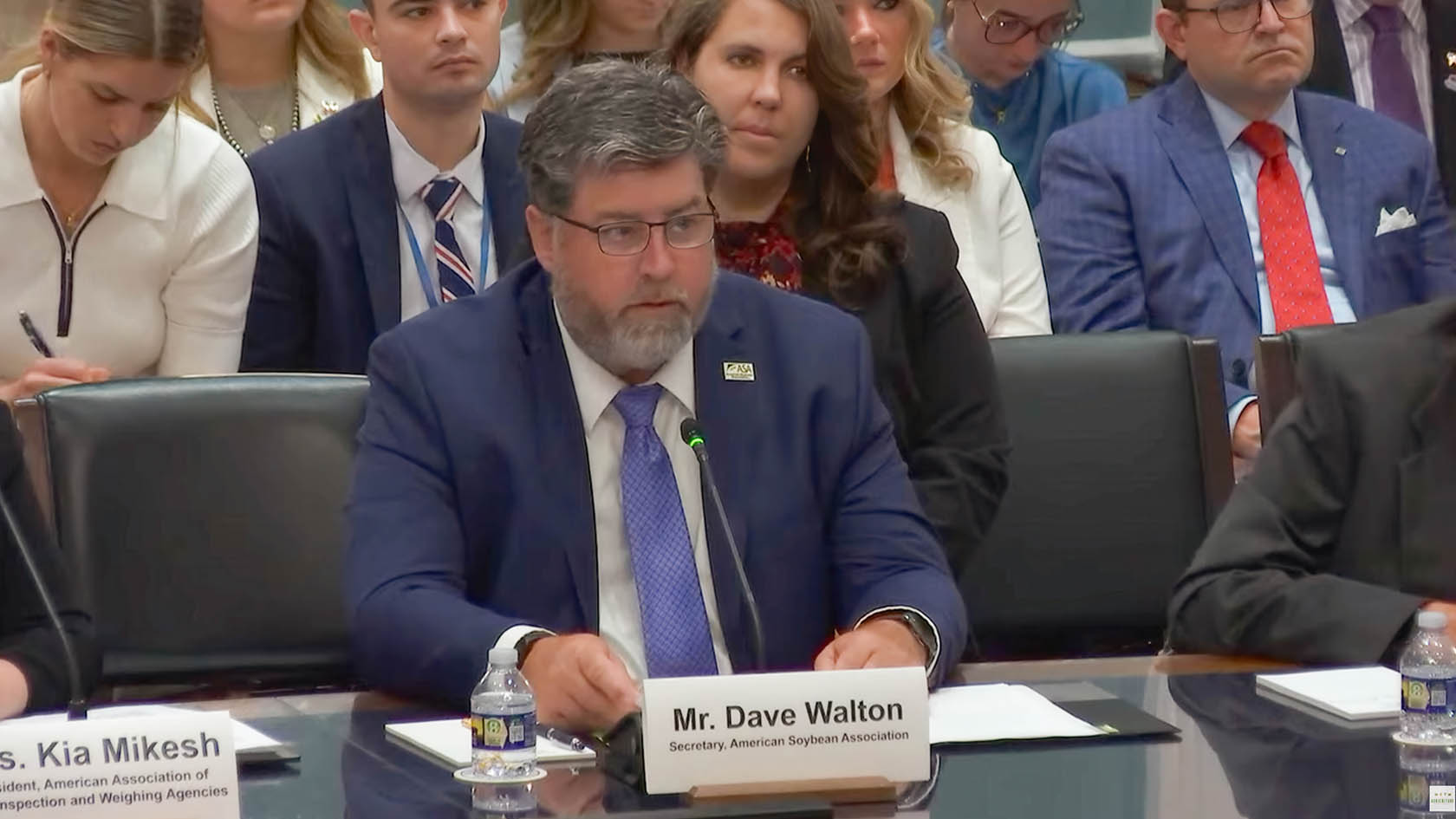
Iowa farmer Dave Walton speaks during the House Agriculture Committee hearing.
Iowa Farmer: Grain standards key to soybean trade trust
June 26, 2025 | Bethany Baratta
Iowa farmer Dave Walton testified before the House Agriculture Committee today to voice his support for the reauthorization of the U.S. Grain Standards Act, which authorizes the Federal Grain Inspection Service (FGIS) to establish official marketing standards for certain grains and oilseeds, including soybeans, corn, oats, wheat, sorghum and others. Prior to export, inspections are carried out by FGIS or by state agencies that have delegated inspection authority by FGIS.
Walton serves as the secretary of the American Soybean Association (ASA). He is also a member of ASA's executive committee. Founded in 1920, ASA represents U.S. soybean farmers on domestic and international policy issues important to the soybean industry.
Walton says the current grains inspection systems meets farmers' needs; FGIS is the international gold standard for grain grading, he says.
"Our international customers know that U.S. soybeans, whether they originate from our state or any other soybean-producing state in the nation, they're going to be of the same uniform and high quality," says Walton, who grows soybeans, corn, alfalfa, grass hay and raises beef cattle and sheep alongside his wife and sons.
Walton noted that the U.S. soybean industry has a strong relationship with FGIS, and when questions arise, the industry and FGIS work together to resolve the issues and maintain the integrity of the standards.
Such was the case around 2021 when soybean color was called into question.
Prior to 2023, U.S. Department of Agriculture (USDA) maintained "soybeans of other colors," or SBOC, as an official grade-determining factor under the U.S. Standard for Soybeans. The seed coat of a soybean can naturally vary in color based on a variety of reasons, and the grading standard allowed for a certain percentage of SBOC within the soybean standards, Walton explained to the committee. For example, U.S #1 soybeans could have up to 1% SBOC, U.S. #2 soybeans up to 2%, etc.
However, occurrences of SBOC began to rise in 2021, and in 2022 hit levels that had not been seen before in the modern era. This was due to adoption of a new seed variety by many farmers across the U.S. This new variety is extremely popular and has proven to combat herbicide-resistant weeds. An unexpected side effect of this new soybean seed variety was the occasional occurrence of off-color seed coats.
In response to rising levels of SBOC, FGIS conducted a study on the functionality of protein and oil content of soybean samples containing amounts of SBOC. The results found no significant differences in the protein or oil content as compared to samples not containing SBOC.
"However, marketing concerns remained, and FGIS took multiple meetings with industry, solicited feedback, and provided notice and comment on a proposed rule to remove SBOC from the U.S. Standard for Soybeans," Walton says.
"In July 2023, a final rule was issued removing SBOC as a grade-determining factor for U.S. soybeans - a win for soybean farmers and an example of industry collaboration. Changing the U.S. Standard for Soybeans benefited farmers, exporters and international customers by providing additional clarity and ensuring our trading partners knew that no matter what, they were still receiving the soybeans they wanted," he said.
See Walton's full testimony here.
Written by Bethany Baratta.
Back